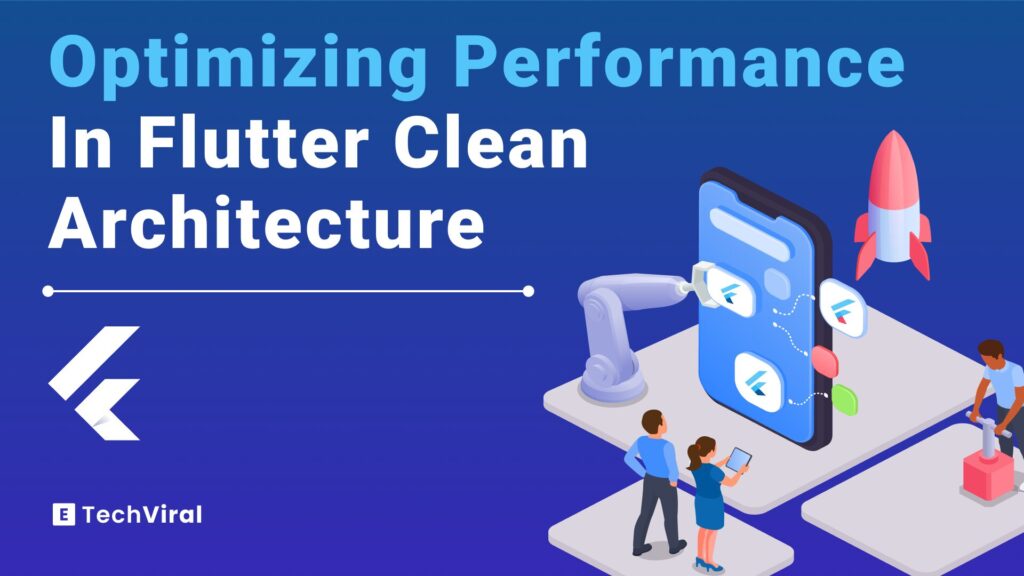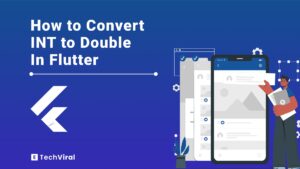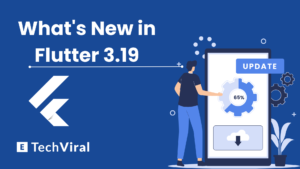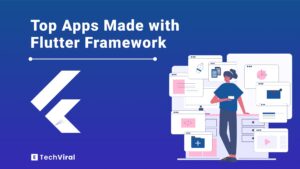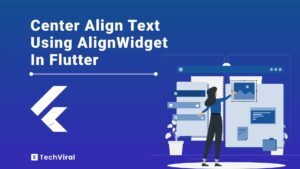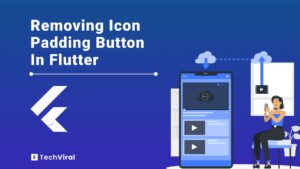Flutter has revolutionized app development with its “write once, run anywhere” approach, but achieving optimal performance demands more than just using the framework—it requires a strategic approach.
Clean architecture plays a pivotal role in this, ensuring code is organized, maintainable, and efficient. This guide dives into how leveraging clean architecture and implementing best practices in widget optimization, memory management, and overall optimizing flutter app performance in clean architecture can significantly enhance your Flutter app’s performance. Aimed at both novice and seasoned developers.
Key Takeaways
| Section | Key Takeaways |
| Understanding Flutter Performance | Highlights the impact of architectural choices on app performance and identifies common performance issues. |
| Flutter Architecture Best Practices | Discusses the significance of selecting the right architectural pattern and structuring projects for scalability. |
| Efficient Widget Management | Provides strategies for using stateless widgets, optimizing widget trees, implementing lazy loading, and managing memory effectively. |
| Advanced Performance Techniques | Explores techniques to minimize expensive operations, such as optimizing build processes and using saveLayer() wisely. |
| Optimizing Network and Assets | Offers best practices for reducing network requests and efficiently managing images and assets. |
| Debugging and Profiling | Introduces tools and techniques for performance profiling and identifying bottlenecks in Flutter apps. |
| Platform-Specific Enhancements | Suggests strategies for leveraging platform-specific features to enhance performance and address cross-platform considerations. |
| Code and Project Structure | Advises on code and project structuring best practices to maintain a clean, efficient, and scalable codebase. |
| Additional Considerations | Covers the importance of error handling and logging best practices in maintaining and optimizing Flutter apps. |
Understanding Flutter Performance
The Impact of Clean Architecture on Application Performance
When we talk about building apps with Flutter, one of the first things that should come to mind is how clean architecture and repositories of your app can significantly impact its performance. You might be wondering, “What exactly does architecture have to do with how fast or smoothly my app runs?” Well, it’s quite a bit, actually.
Clean architecture is like the blueprint for your app; it dictates how different parts of your app communicate with each other, how data flows through the app, and how changes in one area can affect another. Think of it as organizing a huge party. If you have a good plan in place, everything runs smoothly – guests know where to go, the food is ready on time, and the music keeps everyone in a good mood. But if you’re disorganized, guests might end up bumping into each other, the food might be cold, and you could end up playing music nobody likes.
Similarly, with a clean architecture, your app knows exactly how to handle data, where to fetch it, how to display it, and how to store it, ensuring everything runs as efficiently as possible.
Modularity
A key benefit of adopting clean architecture is modularity. By dividing your app into independent layers, each with a specific responsibility, you make your code not just easier to understand and manage but also more adaptable to change. For instance, if you need to switch out your data source from a local database to a cloud-based system, you can do so without having to rewrite your entire app. This modularity also plays a crucial role in testing, making it easier to test individual parts of your app in isolation, ensuring they perform well under various conditions.
Performance Optimization
Another critical aspect is performance optimization. Clean architecture in Flutter helps in identifying performance bottlenecks more straightforwardly. Since your app’s functionality is neatly compartmentalized, you can pinpoint which layer or component is slowing down your app and address the issue directly, whether it’s an inefficient data query or a resource-heavy UI component.
Common Performance Issues in Flutter Apps
Flutter apps, like all apps, are prone to certain performance issues if not carefully designed and managed. Some of the most common issues include:
- Janky animations and slow UI responses: This often happens when the app is doing too much work on the main thread, leaving little room for the UI to render smoothly.
- Memory leaks and overuse of resources: Without proper management, apps can consume more memory than they release, leading to crashes and sluggish performance.
- Excessive rebuilds of widgets: Inefficient use of state management can lead to unnecessary rebuilding of widgets, wasting CPU cycles and slowing down the app.
To mitigate these issues, developers can employ various strategies, such as:
- Using the right widgets: Choosing StatelessWidget whenever possible and minimizing the depth of the widget tree can help reduce the workload on the main thread.
- Profiling and monitoring: Regularly using Flutter’s performance profiling tools can help identify and resolve issues before they become problematic.
- Efficient state management: Implementing an efficient state management solution can minimize unnecessary widget rebuilds and keep the app running smoothly.
Optimizing flutter app performance in clean architecture
In the world of Flutter development, architecture isn’t just about how your app looks on the surface; it’s the underlying framework that dictates how everything in your app works together smoothly and efficiently.
By adhering to best practices in architecture, you set your app up for success from the get-go, ensuring it’s scalable, maintainable, and, above all, performant. Let’s dive into the architectural patterns and strategies that can help you achieve this.
Choosing the Right Flutter Architectural Pattern
Selecting an architectural pattern is a bit like choosing the foundation for a building. Just as the foundation affects the building’s stability, the architectural pattern you choose impacts your app’s performance and its ability to grow and adapt over time. There are two main architecture that experts recommend to use for building apps, Clean architecture and MVVM and also There are several popular patterns in the Flutter community, each with its own set of advantages:
MVC (Model-View-Controller)
This classic pattern separates your app into three interconnected parts, making it easier to manage and update. However, it’s crucial to ensure the controller doesn’t become a dumping ground for all your business logic, as this can lead to bloated and hard-to-maintain code.
BLoC (Business Logic Component)
BLoC stands out for its ability to separate business logic from UI, making it easier to manage state and data flow in more complex apps. By using streams and sinks, BLoC facilitates reactive programming, leading to apps that are responsive and performant.
Provider
A simpler alternative to BLoC, Provider is all about simplicity and efficiency. It wraps around InheritedWidget, making state management and data flow across your app more straightforward. It’s especially useful for medium-sized apps or those just starting with state management.
No matter which pattern you choose, the key is consistency. Stick with your chosen pattern throughout your app to maintain a clean, organized codebase.
Structuring Flutter Projects for Scalability and Maintainability
A well-structured project is like a well-organized library, it’s easy to find what you’re looking for, and everything is in its right place. Here are a few tips for structuring your Flutter projects:
- Organize by feature, not by file type: Instead of having folders for models, views, and controllers, organize your files based on features. This approach makes it easier to scale your app and manage changes, as all related files for a feature are in one place.
- Use packages and modules: For larger projects, consider breaking your app into packages or modules. This can help reduce build times, make your app easier to navigate, and facilitate team collaboration.
Also, read Implementing clean architecture with Getx for building scalable and maintaianable applications.
Best Practices for Flutter API Calls
API calls are the lifeline of most apps, fetching and sending data to frontend from the backend. Here’s how you can optimize your API interactions in Flutter:
- Use a dedicated class for API calls: Centralizing your API logic in one class or service simplifies debugging and testing. It also makes it easier to implement changes to your API strategy without affecting the rest of your code.
- Implement asynchronous operations: Flutter’s async/await syntax is your friend when it comes to making API calls. It allows your app to remain responsive, ensuring a smooth user experience while waiting for data to load.
- Request cancellation and response caching: Implement request cancellation to avoid wasting resources on calls that are no longer needed. Additionally, caching responses can significantly improve performance by reducing the need for repeat API calls.
Efficient Widget Management for Best Performance Optimization
In Flutter, widgets are everything. They’re the building blocks of your app’s UI, and how you manage them can make a significant difference in your app’s performance. Efficient widget management leads to smoother animations, quicker load times, and an overall better user experience. Let’s break down the strategies to manage widgets effectively.
Building Performant Flutter Apps with Stateless Widgets
Flutter offers two main types of widgets: Stateless and Stateful. Stateless widgets are immutable, meaning their properties can’t change—all values are final. This immutability makes them extremely lightweight and perfect for parts of your UI that don’t need to change over time.
Advantages of Stateless Widgets:
- Efficiency: Because they don’t need to be redrawn often, stateless widgets can help improve your app’s performance.
- Simplicity: Stateless widgets require less boilerplate code, making your codebase cleaner and easier to maintain.
When building your UI, always ask yourself if a widget needs to hold state. If it doesn’t, make it stateless. This simple decision can lead to significant performance gains as your app scales.
Optimizing Widget Trees for Faster Rendering
The structure of your widget tree is crucial for rendering performance. A deeply nested or complex tree can slow down your app, while a well-optimized tree can enhance it significantly.
Tips for Optimizing Your Widget Tree:
- Flatten your tree where possible: Try to reduce the depth of your widget tree by removing unnecessary parent-child relationships.
- Use the const constructor for widgets that never change: This tells Flutter that the widget can be reused, reducing the need to rebuild it.
- Leverage Flutter’s built-in widgets for layout and alignment: Widgets like Row, Column, and Flex are optimized for performance and can help reduce the complexity of your tree.
Implementing Lazy Loading and Asynchronous Operations
Lazy loading is a strategy that loads content as needed rather than all at once. This can significantly improve your app’s load time and responsiveness, especially for content-heavy apps.
How to Implement Lazy Loading in Flutter?
- For lists and grids: Use the ListView.builder and GridView.builder constructors to only build items that are currently visible on the screen.
- For images and assets: Consider using packages like flutter_lazy_load_scrollview to load images as the user scrolls, reducing initial load time.
Asynchronous operations, such as fetching data from an API, should be handled carefully to avoid blocking the main thread. The FutureBuilder and StreamBuilder widgets are excellent for managing async data, updating your UI in response to new data without freezing the app.
Tips for Memory Management and Avoiding Memory Leaks
Proper memory management is key to avoiding memory leaks and ensuring your app runs smoothly.
Here are some tips:
- Dispose of resources when not needed: Make sure to dispose of any controllers, animations, or streams in your widget’s dispose method.
- Use the final keyword for immutable variables: This can help the Dart VM make optimizations under the hood.
- Monitor your app’s memory usage: Tools like Flutter DevTools can help you track down memory leaks and see how your app is using memory in real-time.
Advanced Performance Techniques to Optimize Flutter Applications
Delving deeper into the Flutter performance toolkit, there are several advanced techniques that can significantly enhance the responsiveness and efficiency of your applications.
Understanding and applying these strategies can be the difference between an app that merely functions and one that excels in user experience and performance.
Minimizing Expensive Operations in Flutter
Flutter apps are designed to run at a smooth 60 frames per second (fps), providing a slick, seamless experience for the user. Achieving this requires careful attention to the operations that your app performs, especially those that are computationally expensive or resource-intensive.
One key area to focus on is the build() method within your Flutter widgets. This method can be called frequently, and ensuring its operations are lightweight is crucial. For instance, avoid complex calculations or synchronous I/O operations within build(), as these can stall the rendering process. Instead, perform necessary computations ahead of time or in the background, and use the build() method purely for rendering UI elements based on pre-computed data.
Another advanced technique involves the judicious use of Flutter’s saveLayer() function. While powerful, saveLayer() can be costly in terms of performance, as it creates an offscreen buffer that can increase GPU work.
It’s essential to understand when its use is truly beneficial—such as when applying complex post-processing effects to a widget. In many cases, alternative strategies can achieve similar visual effects without the performance penalty. Regularly profiling your app with Flutter DevTools can help identify overuse of saveLayer() and guide optimizations.
Reducing the use of opacity and animations that require extensive repainting can also improve performance. While animations and dynamic effects can significantly enhance your app’s aesthetics and user experience, they should be used judiciously. Consider the impact on rendering performance, especially for animations within scrolling content or on elements that are frequently updated.
Flutter provides mechanisms like the Opacity widget for creating transparent effects, but static visuals or animations that don’t require full redrawing of the widget can often be more efficient.
Efficient implementation of lists and grids is another area where significant performance gains can be found. Flutter’s ListView.builder and GridView.builder constructors allow for the dynamic creation of list and grid elements as they become visible, rather than upfront creation of all elements. This lazy loading approach ensures that the memory and processing power are used only for content that the user interacts with, rather than for offscreen elements that contribute to resource bloat.
Implementing Performance Best Practices
Incorporating these advanced techniques into your Flutter development process requires a mindset of continuous optimization and vigilance. Regularly using Flutter’s suite of profiling tools can help you identify bottlenecks and areas for improvement. Additionally, staying informed about the latest Flutter performance tips and best practices through the Flutter community and documentation can provide new insights and strategies for optimizing your apps.
Optimizing Network and Assets in Flutter Apps
In the digital age, an app’s performance is heavily reliant on how efficiently it handles network requests and manages its assets. For Flutter apps, optimizing network calls and the use of images, fonts, and other assets can drastically reduce load times, minimize data usage, and enhance the overall user experience. This section dives into the strategies for streamlining network interactions and asset management in your Flutter applications.
Optimizing Network Requests
Network requests are an integral part of most mobile applications today, fetching data from or sending data to a server. The efficiency of these operations directly impacts an app’s responsiveness and user satisfaction. Here are key considerations for optimizing network requests:
1. Minimize the number of network calls
Every network request introduces a potential delay in your app’s workflow. Aim to reduce these calls by fetching data in batches or using websockets for continuous data exchange, depending on your app’s requirements.
2. Compress data payloads
Utilize compression algorithms for your API responses to reduce the amount of data transmitted over the network. JSON and XML can often be significantly compressed, which speeds up transfer times and reduces data consumption.
3. Cache server responses
Implement caching mechanisms to store responses from previous network requests. This can dramatically decrease load times and reduce network traffic for repeat requests. Flutter’s http package supports basic caching, but for more sophisticated needs, consider using a package like dio with a caching interceptor.
4. Use efficient data formats
Choose data formats that are both lightweight and easy to parse. While JSON is the most common format for web APIs, protocols like Protocol Buffers (protobuf) offer a more compact and faster-to-parse alternative for binary data exchange.
Managing Assets Efficiently
Flutter apps often include various assets such as images, icons, animations, and fonts, which enhance the visual appeal and user experience. Efficient management of these assets is crucial for optimizing performance and ensuring smooth operation.
1. Optimize image sizes
Large images can significantly impact an app’s performance and memory usage. Optimize your images by resizing them for the display sizes you need and using web-optimized formats like JPEG for photographs and WebP for transparent images.
2. Use asset variants
Flutter allows you to specify different asset variants for different screen resolutions. By providing appropriately sized images for low, medium, and high-density screens, you can ensure that your app uses only the necessary resources for each device.
3. Lazy load assets
Just as with network requests, consider lazy loading assets that are not immediately necessary for the initial app experience. Flutter’s package ecosystem includes libraries that can help manage asset loading efficiently, ensuring that resources are only loaded when needed.
4. Preload important assets
For assets that are crucial to your app’s initial user experience, consider preloading them as the app starts. This can improve the perceived performance by ensuring that key visuals and data are ready when the user first interacts with your app.
Debugging and Profiling in Optimization of Flutter Apps
Ensuring your Flutter app performs well requires more than just implementing best practices during development. You also need to continually assess its performance and look for areas of improvement. This is where debugging and profiling come into play, allowing you to pinpoint and address issues that could be hindering your app’s performance. Let’s explore how you can effectively use Flutter’s tools to keep your app running smoothly.
Performance Profiling with Flutter DevTools
Flutter DevTools is a suite of performance tools designed to help you diagnose and solve performance issues in your app. It provides insights into CPU usage, memory usage, and rendering times, among other metrics. By regularly profiling your app with DevTools, you can identify bottlenecks and optimize resource usage. Here are some key features to leverage:
- CPU Profiler: This tool shows you where your app spends its time while executing. High CPU usage can indicate inefficient algorithms or processes that are too complex and need simplification.
- Memory Profiler: Memory leaks and unnecessary allocations can slow down your app and even lead to crashes. The Memory Profiler helps you track down these issues by showing you a detailed view of your app’s memory usage over time.
- Network Profiler: If your app makes network requests, the Network Profiler can help you understand how these requests impact performance. It allows you to see the timing, size, and success rate of each request, helping you identify opportunities for optimization.
Identifying and Resolving Common Pitfalls
While Flutter aims to make development as smooth as possible, there are common pitfalls that developers may encounter. Here are a few to watch out for:
- Widget Rebuilds: Excessive rebuilding of widgets can lead to poor performance, especially if those rebuilds are unnecessary. Use the Widget Inspector in DevTools to identify which widgets are being rebuilt frequently and why. Often, optimizing state management or using more efficient widgets can reduce unnecessary rebuilds.
- Layout Performance: Complex layouts can also degrade performance. Use the Layout Explorer in DevTools to visualize and optimize your app’s layout. Simplifying layouts or using more performant layout widgets can often yield significant improvements.
- Rendering Performance: Flutter’s rendering engine is designed to offer high performance, but complex UIs can still lead to jank. The Performance Overlay in DevTools shows you when your app’s UI is not rendering smoothly. Look for spikes in the graph, which indicate frame rendering times that exceed the budget (usually 16ms for 60fps), and optimize those parts of your UI.
Best Practices for Debugging and Profiling
Effective debugging and profiling are key to maintaining high performance in your Flutter apps. Here are some best practices to follow:
- Profile Early and Often: Don’t wait until the end of development to start profiling. Integrate performance testing into your development process to catch and resolve issues early.
- Use Real Devices: While emulators and simulators are convenient for development, they can’t perfectly replicate the performance characteristics of real devices. Always profile and test your app on physical devices to get accurate performance insights.
- Focus on User Experience: Ultimately, the goal of optimizing performance is to improve the user experience. Pay special attention to the parts of your app that are most visible or critical to users, ensuring they run as smoothly as possible.
Platform-Specific Enhancements
Creating a Flutter app that performs well across all platforms requires a nuanced understanding of the unique characteristics and performance considerations of each platform. While Flutter’s cross-platform capabilities significantly streamline development, optimizing for individual platforms can elevate your app’s performance and user experience to the next level. lets explore strategies for implementing platform-specific enhancements in your Flutter apps.
Leveraging Platform-Specific Features
Flutter allows you to tap into native platform features and APIs through platform channels, offering the potential to significantly enhance performance and functionality. Here’s how you can leverage these features:
- Native Code Integration: For performance-critical operations, consider writing native code in Kotlin/Java for Android or Swift/Objective-C for iOS. This can be particularly effective for tasks like heavy computation, image processing, or database access, where native code may outperform Dart.
- Hardware Acceleration: Take advantage of hardware acceleration features available on the platform. For example, using Metal on iOS or Vulkan on Android for graphics rendering can lead to smoother animations and transitions.
- Background Processing: Efficiently manage background processes by adhering to platform-specific best practices. This includes using the appropriate APIs for background tasks, which can help minimize battery consumption and improve app responsiveness.
Optimizing for Platform-Specific UI Patterns
Each platform has its own set of UI patterns and user expectations. Aligning your app’s design and navigation with these patterns can greatly improve its perceived performance and user satisfaction:
- Adaptive Layouts: Design your UI to adapt seamlessly to different screen sizes and orientations across platforms. Use Flutter’s MediaQuery and LayoutBuilder widgets to create responsive layouts that look great on any device.
- Platform-Consistent Navigation: Implement navigation patterns that users expect on each platform. For instance, drawer navigation may be more common on Android, while tab bars are prevalent on iOS. Flutter’s adaptive widgets, like AdaptiveNavigationBar, can help you achieve a native look and feel.
- Gesture Optimization: Tailor touch interactions and gestures to match platform conventions. This can include swipe gestures for back navigation on iOS or integrating haptic feedback appropriately.
Cross-Platform Performance Considerations
While optimizing for individual platforms, it’s also crucial to maintain a balanced approach that doesn’t compromise the app’s overall cross-platform efficiency:
- Code Sharing: Aim to maximize code reuse across platforms while selectively implementing platform-specific enhancements. This approach ensures that your optimizations do not lead to code duplication or fragmentation.
- Conditional Compilation: Use conditional compilation to include platform-specific code only where it’s needed. Dart’s dart:io library and Flutter’s Platform class allow you to check the operating system and compile code conditionally, minimizing the impact on performance and app size.
- Testing Across Environments: Rigorous testing across all target platforms is essential to ensure that performance optimizations for one platform do not adversely affect another. Automated testing frameworks, along with manual testing on physical devices, can help catch and resolve cross-platform issues early in the development process.
Code and Project Structure for Flutter App Performance Optimization
A well-organized codebase and project structure are fundamental to maintaining and optimizing a Flutter app over its lifecycle. As your app grows in complexity and size, the importance of adhering to best practices in code organization and project structuring becomes paramount. This approach not only facilitates easier navigation through the codebase for developers but also enhances the app’s maintainability and scalability. Let’s delve into strategies to optimize your Flutter app through effective code and project structuring.
Flutter Code Structure Best Practices
The way you structure your code can have a significant impact on your app’s performance and your team’s productivity. Here are key practices to consider:
- Modularize Your Code: Break down your app into modules or packages based on functionality. This modular approach not only makes the code easier to understand and maintain but also facilitates reuse across different parts of your app or even in other projects.
- Follow Proper Naming Conventions: Consistent naming conventions are crucial for readability and maintainability. Use clear and descriptive names for classes, functions, and variables, and stick to the conventions recommended by the Dart style guide.
- Implement Clean Architecture: As discussed earlier, clean architecture principles help in separating concerns, making your app more scalable and easier to test. Organize your code into layers (presentation, domain, data), and ensure that each layer has a clear responsibility and minimal dependencies on others.
- Leverage Dart and Flutter’s Language Features: Dart offers many features that can help you write more concise and efficient code, such as extension methods, mixins, and null safety. Make full use of these features to enhance your code quality and app performance.
Flutter Project Structure Best Practices
A logical and well-planned project structure is just as important as the code itself. A good structure supports efficient development workflows and makes it easier to locate and manage resources. Consider these best practices:
- Structure by Features, Not by Type: Organize your project files around features rather than file types. This means grouping all files related to a specific feature—such as models, views, and controllers—within the same directory. This approach improves cohesion and makes it easier to navigate the project.
- Use a Consistent Directory Layout: Establish a standard directory layout at the beginning of your project and stick to it. Common top-level directories include lib/ for Dart code, assets/ for images and fonts, and test/ for unit and integration tests.
- Separate Business Logic from UI Logic: Keep your business logic independent of your UI code. This separation not only makes your code cleaner but also simplifies testing and allows you to change your UI without affecting the core logic of your app.
- Manage Dependencies Wisely: Keep an eye on your pubspec.yaml file and manage your dependencies carefully. Regularly update your dependencies to leverage performance improvements and bug fixes, but also make sure to test thoroughly after updates to avoid introducing new issues.
Additional Considerations for optimizing Flutter Application performance
While focusing on architecture, widget management, and performance optimization is crucial, there are additional considerations that play a significant role in the overall success and maintainability of a Flutter app. These include error handling, logging, and the adoption of good practices that ensure your app is robust, secure, and easy to maintain. Let’s explore these aspects in more detail.
Error Handling Best Practices
Effective error handling is key to creating a resilient and user-friendly app. Unhandled errors can lead to crashes, data loss, and a poor user experience. In Flutter, you have several strategies at your disposal to gracefully handle errors:
- Use Try-Catch Blocks: Wrap potentially risky operations in try-catch blocks to catch exceptions as they occur. This approach allows you to handle errors gracefully, such as by showing a user-friendly error message or attempting a recovery operation.
- Global Error Handling: Implement a top-level error handler using FlutterError.onError and Zone to catch unhandled exceptions. This can be useful for logging errors, sending error reports to a server, or displaying a generic error screen to the user.
- Async Error Handling: For asynchronous operations, use Future.catchError and Stream.handleError to catch and handle errors. This ensures that your app remains responsive and can recover from errors that occur during network requests or other asynchronous tasks.
Logging Best Practices
Logging provides insights into your app’s behavior and is invaluable for debugging and monitoring. Implementing a structured approach to logging can help you diagnose issues faster and understand how your app is used:
- Use a Logging Package: While Flutter provides basic logging capabilities, consider using a logging package like logger or loggy for more advanced features like log levels, custom log formats, and better performance.
- Log Levels: Make use of log levels (e.g., debug, info, warning, error) to categorize your logs. This makes it easier to filter logs based on severity and can be especially helpful in production environments.
- Sensitive Data: Be mindful of privacy and security when logging. Avoid logging sensitive information such as passwords, personal data, or proprietary information. Always ensure your logging practices comply with data protection regulations.
Read more about, Security best practices in Flutter clean architecture.
Adopting Good Practices
Beyond error handling and logging, several other practices contribute to the health and quality of your Flutter project:
- Continuous Integration/Continuous Deployment (CI/CD): Implement CI/CD pipelines to automate testing, building, and deploying your app. This not only speeds up the development cycle but also helps catch issues early.
- Code Reviews: Regular code reviews help maintain code quality, share knowledge among team members, and catch potential issues before they make it into production.
- Stay Updated: Flutter and Dart are continuously evolving, with new features and performance improvements being introduced regularly. Keep your dependencies up to date and stay informed about best practices and new developments in the Flutter ecosystem.
Conclusion
Optimizing Flutter app performance is a multifaceted endeavor that extends beyond mere code optimization to encompass architectural decisions, efficient widget management, platform-specific enhancements, and more.
Throughout this comprehensive guide, we’ve explored a wide range of strategies—from adopting clean architecture and managing network and assets efficiently, to debugging and profiling, and implementing best practices for error handling and logging.
These strategies collectively contribute to building Flutter apps that are not only performant but also scalable, maintainable, and robust.
FAQ’s
What is clean architecture and why is it important for Flutter app performance?
Clean architecture organizes an app into independent layers, each with a specific responsibility. It enhances app performance by making code easier to manage, adapt to changes, and pinpoint performance bottlenecks, ensuring efficient data handling and UI rendering.
How does widget management affect Flutter app performance?
Efficient widget management, such as using stateless widgets and optimizing widget trees, reduces workload on the main thread, leading to smoother animations and faster load times, thus improving overall app responsiveness.
What are some common performance issues in Flutter apps?
Flutter apps may face issues like janky animations, memory leaks, and excessive rebuilds of widgets due to poor architecture, inefficient widget management, or inadequate memory management.
How can I optimize network requests and manage assets in my Flutter app?
To optimize network requests, minimize calls, use compression, cache responses, and select efficient data formats. Manage assets by optimizing image sizes, using asset variants, and lazy loading assets to reduce load times and data usage.
What tools and techniques are recommended for debugging and profiling Flutter apps?
Flutter DevTools offers CPU, memory, and network profilers to diagnose performance issues. Regular profiling, using real devices for testing, and focusing on user experience are key practices for maintaining app performance.
How can platform-specific enhancements improve Flutter application performance?
Leveraging platform-specific features through native code integration, hardware acceleration, and efficient background processing can enhance app performance. Additionally, adhering to platform-specific UI patterns ensures a seamless user experience.
What strategies should be adopted for effective code and project structure in Flutter apps?
Modularize code, follow naming conventions, implement clean architecture, and organize the project by features to enhance maintainability and scalability. Managing dependencies carefully and structuring projects logically supports efficient development.

